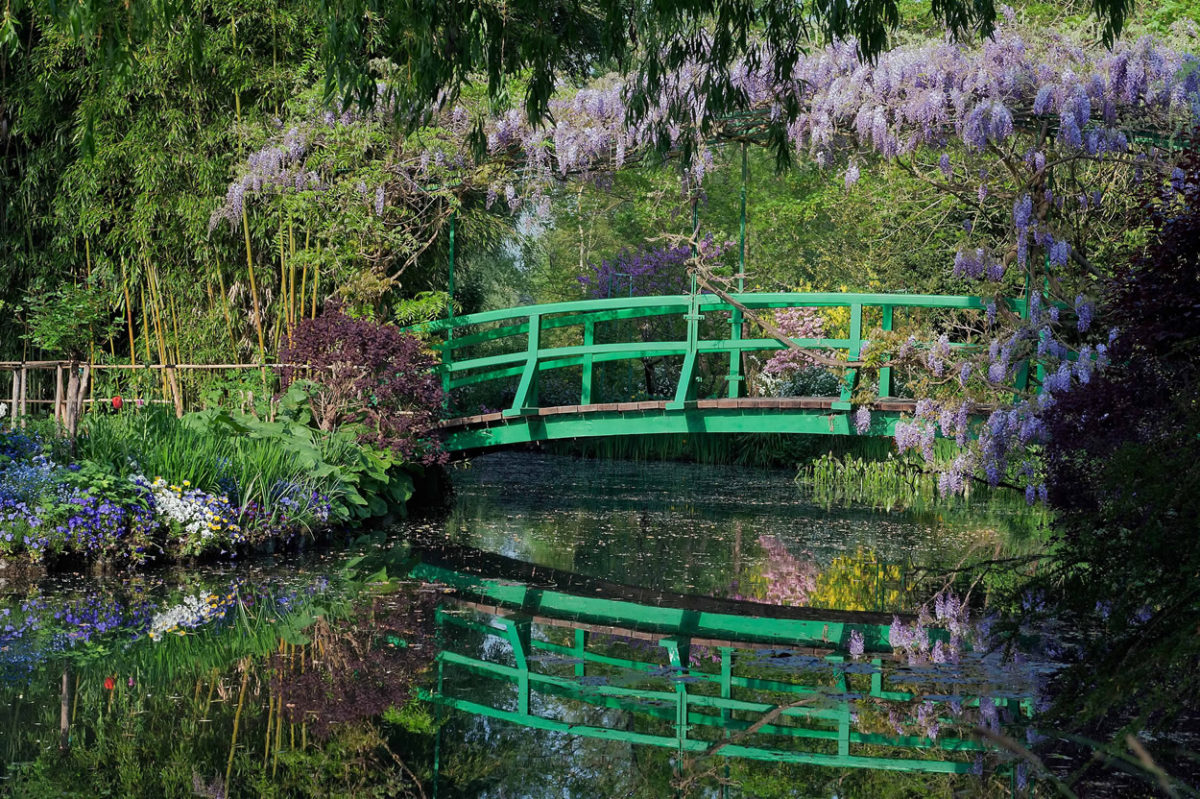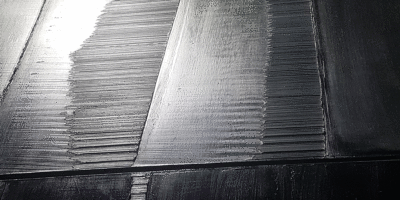What a chance for the public to still be able to discover this landscape originally conceived by Monet, who settled in Giverny in 1883! Inseparable, the Gardens of Giverny and Monet’s work remain the indelible marks of a resolutely modern work for the time: its beautiful radicalism inspired the art world in the 20th century and became a unique heritage story. The Giverny gardens were like a laboratory where the artist would experiment as much the art of the garden as the art of painting. “The pond of water lilies, a work of Land Art before the letter, “* according to Hugues R. Gall, member of the Academy of Fine Arts and director of the Claude Monet Foundation.
The artist will also talk about “staging” plants, with the help of the wise advice of the famous gardener George Truffaut. He will exchange with his friends Gustave Caillebote or Octave Mirabeau, both skilled gardeners. The artist will visit plant exhibitions, botanical gardens and do readings from nursery growers’ catalogues. He will experiment, cross species and obtain water lilies with colors never seen before. Before that, acquiring the landscape had been a deep challenge. Monet would have to fight to obtain permission from the Prefecture of the Eure department to divert a branch from the Epte river, the Rû. What was them at stake? Create ponds as he sees fit for his artistic project…
The Giverny gardens were created ex nihilo as a work of art. Inspired by this landscape in the making, Monet would paint successive blooms created in flower beds and massive perennials with pointillist brushstrokes effects. The garden will be based on a structure that allows for a rhythm of change in planting from east to west and a distribution of north-south colors with cold colors at the top and warm colors at the bottom. This is the opposite of what architects do, notes the chief gardener, Gilbert Vahé.
Jean-Luc Godard, himself, will mention his admiration for the artwork of Monet who was faced with the difficulty of painting a landscape that he could not clearly see in certain mornings. The artist’s answer to the challenge was summed up by the filmmaker: “We must not paint what we see since we see nothing, we cannot paint the fact that we see nothing, because we must paint what we see, therefore remains the possibility to paint what we do not see. He is a painter who says that you have to paint what you don’t see,” says the director who obviously got inspired by Monet’s approach to represent reality. His landscapes “also show us the heavenly food that our imagination can find”, Proust once wrote.
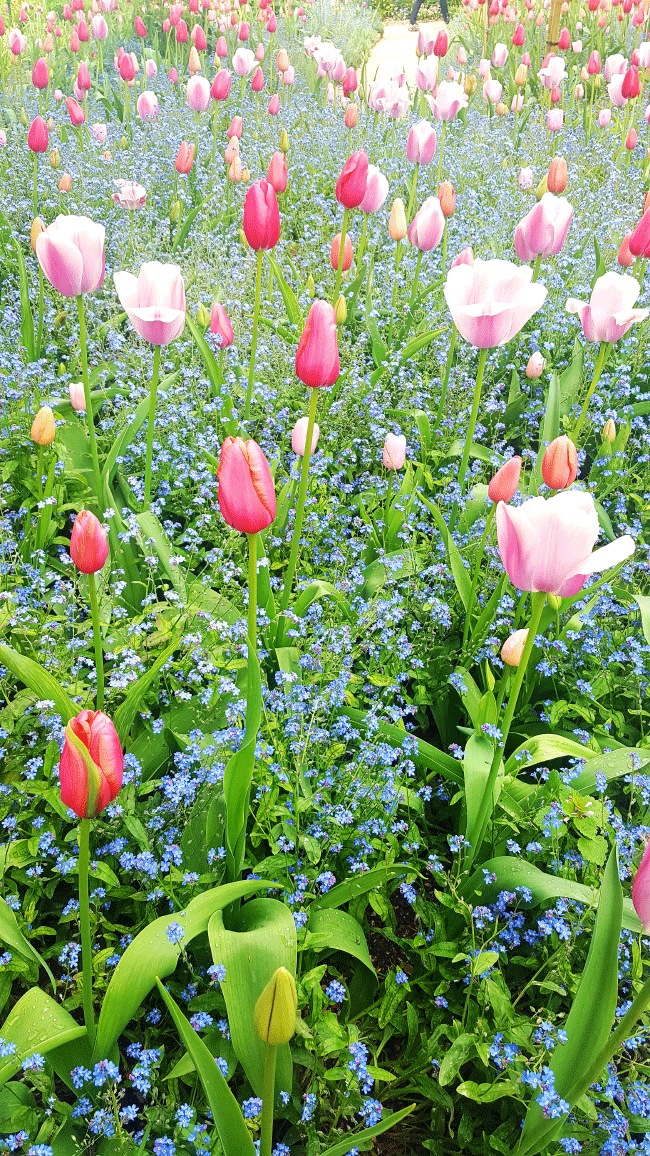
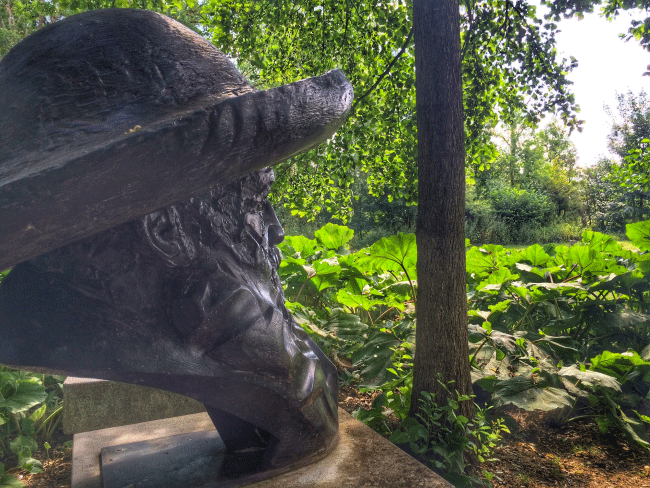
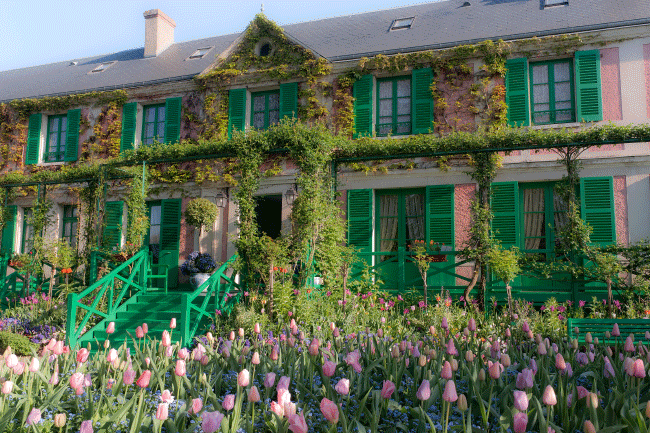
A restored garden
Between Monet’s death in 1926 and the beginning of the restoration of the gardens in 1977, fifty-one years had passed. Gérald Van der Kemp, a painter and also known at the time for the restoration of Versailles through the implementation of an essentially American sponsorship, accepted the challenge of restoring Giverny. His observation was implacable: “In the garden, it is desolation,” he then concluded.
Gathering all the possible resources that testify to what the gardens once were: this is the objective of the Claude Monet Foundation. The plantation choices of the Clos Normand and the Water Garden were made thanks to manifold resources: the memory of André Devilliers who was Georges Truffaut’s former assistant, the archives, family memories, as well as the testimony of the Japanese princess Matsukata who had sent plants to Giverny in her youth. Some cultivars that had disappeared from nursery catalogues were replaced by others that were close to them. Rather than aiming at imitations, couldn’t Monet’s gardens nevertheless venture towards more experimentation on certain plots? After all, reinvention would be a faithful echo of the artist’s avant-garde spirit?
For the time being, the work of gardeners is constantly and noticeably changing, depending on the seasons and daily work. Miracle: the visitor does not realize it. The living work, in perpetual motion, is attached above all to resembling what was once. “You can use archives, and you can create the garden as it was at different times, especially on parts of the Water Garden.” The vast possibilities of reinventing the Water Garden according to some of Monet’s paintings is evident but that would be risky: “People would not understand, there would be a big difference. There is the effect of fashion and the effect of habit. We try not to go for personal tastes either. Even Monet has changed his mind, he finally nuanced. He stayed there for 43 years, so there would be plenty of opportunities to work in the garden in a different way, and he was also a collector, a lover of the garden and the plant. With his friends, he would exchange plants and build collections.”
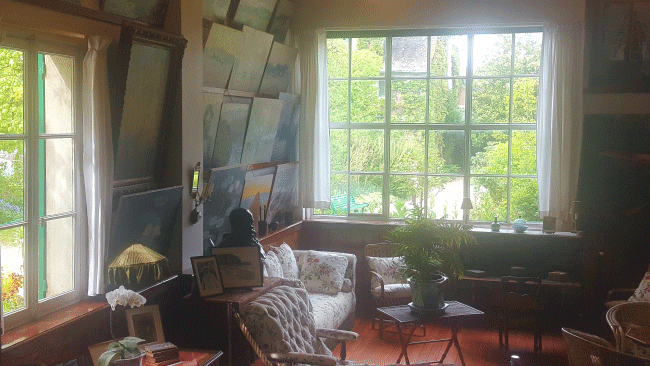
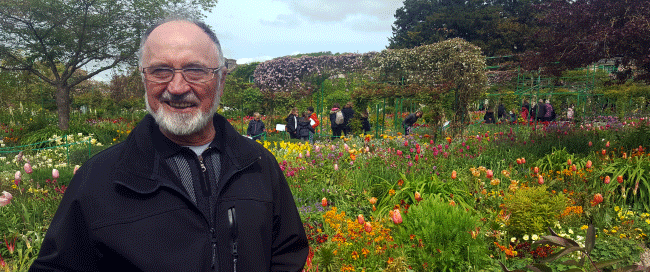
“Therein lies how lucky Monet was:He painted the ephemeral to keep it,” Gilbert Vahé, chief gardener of Giverny
Nowadays, the work of planting differs dramatically from Monet’s time. Back then, explains the chief gardener, the plants were uprooted and replanted, while today, a structure with perennials, some shrubs for example, persists.
Is there an issue to find the right supply? Gardeners do not suffer from it. Because even if seeds like juliennes, for example, were no longer found fifteen or twenty-five years ago, they reappeared years later. And to conclude:
“Yes, replacing plants is not easy, especially when it comes to finding the right color. But that’s a detail, because the world of plants is so rich that we can still manage it. The challenge is nature’s challenge with its diseases. We try to control nature without it being too obvious. The weather is helping us. Monet suffered from floods, frosts, he lamented. It is still the same today, except that the garden is so mixed and rich in plants that it complicates its maintenance.”
The busiest period is the one of replanting the massifs at the same time as the high tourist season. “It is quite complex, and what is quite surprising is that we finish planting in July, which the others do not, of course. As the flowers bloom, we replace them. The current period marks the end of irises, the beginning of roses and the peak of the peony season.”
Day by day attention magnifies the sublime profusion of the few thousand plant species cultivated, planted and pampered according to the traditional know-how. 100,000 plants in small batches are present. 90% of the production comes from the Giverny estate. After all, the homemade artistic garden communicates with the material like any othervcraftsman with his material would do:
“We realize that it is nature that guides us”, says the head gardener. “At certain quiet moments, I tell myself that it’s still beautiful, but it’s ephemeral, it won’t last, I know it too. We live with the seasons. Therein lies how lucky Monet was: he painted the ephemeral to keep it,” Gilbert Vahé, chief gardener of Giverny.
He concluded: “The years follow one another and are not the same.” That’s why a visit to Monet’s gardens in Giverny will never offer the same experience to visitors and remains a special experience!
Notes :
Site of the Fondation Claude Monet
Chaine YouTube de Canon : Exclusive Interview with the Legend (Part 2) Cannes 2014
Actualité Livres sur Claude Monet :
Monet, nomade de la lumière, BD de Efa et Rubio
@thedailycouture
Depuis 2011, à la demande, the Daily Couture organise des immersions dans les Ateliers Haute Couture à Paris travaillant pour les plus grandes maisons de mode.
Envoyez-nous votre demande : info@thedailycouture.com
En savoir plus, c'est par ici : Visites Ateliers Haute Couture à Paris | Immersions Mode
Ils nous font confiance : ref clients

